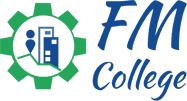Bridging the Facilities Management Workforce Gap with Smarter Digital Tools
Pressure is mounting. The facilities management industry is facing a critical workforce gap—one that has only been worsening over the past few years as demand for services outpaces available labor. This gap is characterized by a shortage of skilled workers entering the field and an increasing reliance on outdated systems that fail to attract and retain talent.

With 56% of teams expecting more work orders and 43% struggling with understaffing, facilities managers are under growing pressure to do more with fewer resources. The problem has been exacerbated by outdated processes and the lack of modern communication tools, leading to rising frustration and turnover. This is a tough reality for an industry that depends on fast, effective communication and coordinated teamwork to operate safely and efficiently.
The High Cost of Turnover
We know turnover can be detrimental to business profitability. Relay recently uncovered that replacing a single employee typically costs six to nine months’ worth of the worker’s total salary. These figures are substantial: For an employee earning $60,000 annually, replacement costs range from $30,000 to $45,000 per position.
This isn’t just an inevitable cost of doing business. Companies leveraging modern technology see 4.5 times higher retention rates than those relying on outdated systems, which is a significant advantage for both employee satisfaction and long-term financial stability.
With appropriate technology, businesses can reduce turnover, improve morale, and cultivate a more efficient workforce that remains engaged and productive.
Why Outdated Tools Are Driving Talent Away
While clunky radios and spreadsheets may have worked in the past, they fall short in meeting the needs of today’s workforce. This is especially true for Gen Z, a population raised on innovation. According to a 2023 Adobe survey, 70% of Gen Z employees would leave their job for better technology. This statistic highlights a growing issue for employers, where outdated tools and inefficient processes can drive talented workers to seek opportunities elsewhere.
Additionally, they see their peers in other industries leveraging tools that streamline work and foster collaboration. This contrast can lead to disengagement or frustration, as young workers feel they’re being held back by inefficient systems. When employees feel unsupported and uninspired, their departure becomes inevitable.
How to Change the Game
Frontline workers often become frustrated when managers lack real-time visibility of their teams, leading to inefficient task allocation. For instance, when facilities managers can’t track employee locations, they might inadvertently send someone to a location that another team member has already visited, wasting valuable time and creating unnecessary frustration.
Modern tools effectively address this challenge through advanced location tracking capabilities. Facilities managers can now view their teams’ positions in real-time, allowing them to make informed decisions about task assignments. When a new work order comes in, managers can immediately identify which employee is closest to the location and assign them the task, eliminating redundant trips and optimizing workflow efficiency. This smarter approach not only streamlines operations and enables data-driven decision making, but also demonstrates to employees that management values their time and productivity—a critical factor in fostering job satisfaction and reducing turnover.
Breaking Language Barriers and Building Belonging
In addition to improving efficiency, modern communication tools can help break down language barriers—a common challenge in facilities management. With teams made up of workers from diverse backgrounds, language differences can create feelings of isolation and confusion. But what if workers could communicate in their native language, instantly and without friction?
The right communication solutions can make this possible by enabling real-time language translation. These tools connect workers seamlessly, helping them communicate across language barriers and ensuring everyone is on the same page. The result? Frontline workers feel more supported and connected, regardless of their language.
When workers can communicate in their native language, it fosters a sense of belonging. I often think about my immigrant parents and the barriers they faced when they couldn’t understand or be understood at work. The emotional toll of that isolation is real, and modern communication solutions can help workers feel seen, heard, and included.
Close the Gap by Equipping Teams to Succeed
The heart of any business lies in its people, but without proper support, even the most dedicated employees will struggle to maintain their commitment. Modern communication tools offer a powerful solution to the current workforce gap, making it crucial for organizations to equip their teams with these resources not just to survive, but to thrive in today’s competitive landscape.
The return on investment in technology will only continue to grow as these tools evolve beyond basic functionality. In the near future, we’ll witness the addition of practical new features that will further empower employees, transforming these solutions into indispensable assets for facilities management success.
By embracing modern communication platforms today, companies can effectively close the workforce gap, significantly improve operational efficiency, and cultivate a more engaged, loyal workforce that’s prepared to meet tomorrow’s challenges. Forward-thinking organizations that prioritize useful technology now will gain a distinct advantage in attracting and retaining the talent essential for long-term success.
Chris Chuang is the CEO of Relay, a cloud communications platform for frontline teams.
ALSO WATCH: FMA Shorts: What Can You Do to Retain Your FM Workers?
The post Bridging the Facilities Management Workforce Gap with Smarter Digital Tools appeared first on Facilities Management Advisor.

